Neutrino: The Ghost Particle of Nature
Every now and then, a new discovery is achieved around the globe and they unfold yet another mystery of nature. However, they put some new questions on our understanding of the laws of nature. Actually, that is what science is, a continuous process of folding and unfolding mysteries while moving forward to the better understanding of the universe.
Sun is the lifeline of every single living or non-living element on earth, even earth itself. It has been burning through billions of years creating a sustainable condition on earth for life to grow. Till the last century, no one could explain the process going on inside and around the sun.
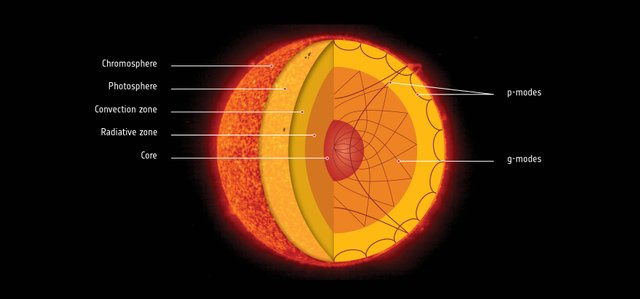
Einstein through his most famous equation, E=mc2 showed that mass can be converted to energy and vice versa. A tiny speck of matter holds a tremendous amount of energy and this process is what lights up the sun. His idea proved that the core of the sun works like a nuclear fusion reactor where hydrogen nuclei undergo fusion reaction to form helium nucleus and a tremendous amount of energy is released in the process which counters the gravitational collapse of the star. This reaction is responsible for producing the vast amount of energy on which the entire solar system has been sustaining for billions of years.
We receive the energy coming out of the sun in the form of photons. But, these photons come from the surface and the atmosphere of the sun. How could we know whats going on inside the sun? How could we prove the existence of nuclear fusion inside the sun? The answer comes in the form of a strange, practically undetectable particle called Neutrino.
Positron/Beta Decay of Nucleus
In the nucleus, if the number of two types of nuclides is not balanced, the nucleus is said to be unstable and hence it emits energetic particles to become stable. In the early nineteenth century, it was found that there seems an anomaly in the conservation of energy and momentum if only the nucleus and the electrons are involved in the Beta Decay of a nucleus.
Let us consider a heavier nucleus, .png) with mass number A and proton number Z. Here, the number of protons is more than the number of neutrons which renders the nucleus to be unstable. This nucleus undergoes a Positron Decay through Weak Interaction(one of the four fundamental forces in nature) process and converts one of its proton to a neutron emitting a Positron from its nucleus to become the more stable nucleus
with mass number A and proton number Z. Here, the number of protons is more than the number of neutrons which renders the nucleus to be unstable. This nucleus undergoes a Positron Decay through Weak Interaction(one of the four fundamental forces in nature) process and converts one of its proton to a neutron emitting a Positron from its nucleus to become the more stable nucleus .png) . Positron is usually denoted by
. Positron is usually denoted by  .
.
.png)
Positron is the antiparticle of electron(and is therefore also known as antielectron) having the same mass as that of electron and with opposite charge. The idea of antiparticle was a revolutionary work of Paul Dirac and Positron was the first of its kind proposed by Dirac himself.
Proton and neutrons are composed of some yet fundamental particles called Quarks. There are six types or flavors of quarks namely up, down, strange, charm, bottom and top. A proton is composed of two up quarks and one down quark while a neutron has two down quarks and one up quark.
When a nucleus undergoes a Positron Decay, the Weak Interaction converts an up quark to a down quark and thus turns it into a neutron and vice versa. That is why the proton number decreased from Z to Z-1 and the mass number remained the same. A positron is generated in the process. The positron is generated inside the nucleus itself and is ejected out of the nucleus because of its electrostatic repulsion with the positively charged nucleus. This process is known as the Radioactive Decay of a nucleus.
The Anomaly
Initially, the nucleus .png) was in rest and hence it has zero momentum. Therefore, the products
was in rest and hence it has zero momentum. Therefore, the products .png) and
and  should have equal momentums in a mutually opposite direction to conserve the momentum i.e.
should have equal momentums in a mutually opposite direction to conserve the momentum i.e. .png) . Let us suppose,
. Let us suppose, .png)
The energy released in the process is the sum of the kinetic energies of the two products,
.png)
Since both of the products have the same momentum, it is the smaller mass i.e. the positron that carries almost all of the kinetic energy. Hence, the energy released in the process is approximately equal to the kinetic energy of the positron and is constant i.e. .png)
However, experimental results showed a continuously distributed energy values w.r.t. the number of positrons emitted as shown in the figure below.
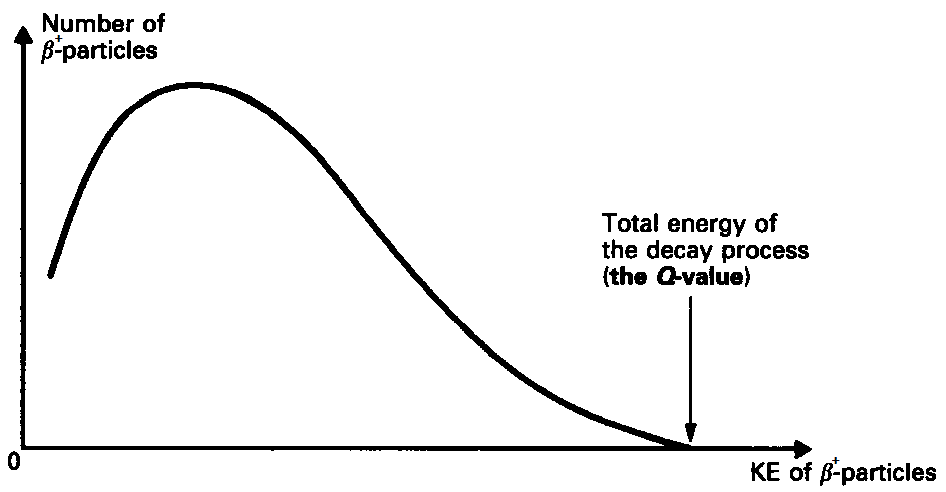
As evident from the plot, the energy carried by most of the positrons is much smaller than Q and the number of positrons with energy Q is actually zero. It means energy carried by the positrons is variable, not constant as predicted by the theoretical calculations.
There is a similar type of decay process in which a neutron is converted to a proton ejecting a fast-moving electron out of the nucleus. These fast-moving electrons are called Beta Particles and hence the decay process is popularly known as Beta Decay. Beta particles are usually denoted by .png) . A similar anomaly in the energy of the
. A similar anomaly in the energy of the .png) is observed in this process too.
is observed in this process too.
So, how to explain it?
Pauli's Proposal
To reconcile this anomaly, Wolfgang Pauli in the 1930s came up with an idea which could resolve the anomaly perfectly. He proposed that a third particle with zero rest mass and zero electric charge is also generated in the process which carries the missing energy in the reaction. This new particle compensates the anomaly in the energy and momentum in the decay process.
.png)
In 1933, physicist Enrico Fermi developed a theory of Beta Decay commonly known as the Fermi's Interaction. In this theory, Fermi for the first time coined the name Neutrino for the particle generated in the Positron Decay process. A Neutrino is denoted by .png) .
.
A similar kind of particle is also generated in the Beta Decay Process which is commonly known as the Antineutrino which is the antiparticle of Neutrino. An Antineutrino is denoted by .png) .
.
.png)
The entire process of Beta Decay can be well understood from the diagram below:
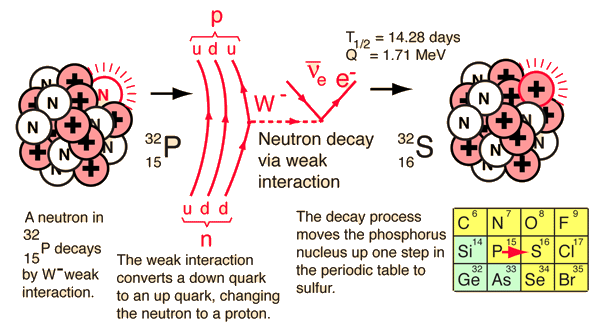
Readers can grasp more on the concept of the generation of Neutrino from the video below posted in the channel Tyler DeWitt:
Neutrino is a particle with very unique features. They are particles extremely low-mass(Initially they were perceived to be massless) and no charge. They very rarely interact with ordinary matter. Due to this non-interactive nature of Neutrinos, they pass through our body and even Earth without being deflected. For this reason, detecting a neutrino is an extremely difficult matter of affair and for this reason Neutrinos are also called as the Ghost Particles of Nature.
Detection of Neutrino
In 1942, the Chinese nuclear physicist Wang Ganchang proposed that Neutrinos can be detected in a very rare process called Electron Capture. In this process, a neutron deficient nucleus absorbs an electron from the inner shells(usually K or L) of the atom and converts a proton into a neutron releasing a neutrino out of the nucleus.
.png)
The neutrino released carries all the decay energy of the reaction which is constant unlike the case in Beta Decay.
In 1956, physicists Clyde Cowan and Frederick Reines detected neutrino for the first time in their famous Cowan-Reines Neutrino Experiment which led them to win the 1995 Nobel Prize in Physics. In this experiment antineutrinos created in a nuclear reactor through Beta Decay were made to react with protons which converted the protons into neutron releasing Positrons along with it.
.png)
The Positron( ) immediately finds an electron and the two annihilate each other releasing energy in the form of gamma rays which are detectable. Similarly, the neutron is also captured in a nucleus releasing gamma rays. The mere coincidence of Positron annihilation and neutron capture is a sign of an antineutrino interaction proving the existence of antineutrino.
) immediately finds an electron and the two annihilate each other releasing energy in the form of gamma rays which are detectable. Similarly, the neutron is also captured in a nucleus releasing gamma rays. The mere coincidence of Positron annihilation and neutron capture is a sign of an antineutrino interaction proving the existence of antineutrino.
The Solar Neutrino Problem and Neutrino Flavors
Solar Neutrinos are the Neutrinos produced in the Sun in a series of Nuclear Fusion Reactions. The primary source of these Neutrinos are the proton-proton reaction.
The Solar Neutrinos are the largest number of Neutrinos received on earth from any natural sources. In fact, a trillion Neutrinos pass through our thumb every single second. So, how to detect and calculate the number of these Solar Neutrinos arriving on Earth.
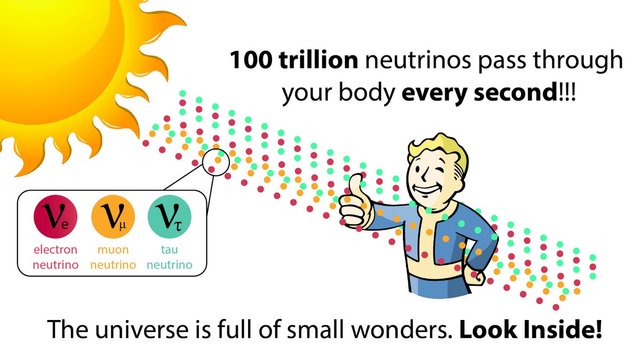
In the Homestake Experiment carried out by Raymond Davis and John N Bahcall in 1960s, a large tank filled with chlorine-rich fluid, perchloroethylene was constructed deep underground(to protect it from cosmic rays). The very low probability of neutrino's interaction with matter was the main reason for the amount of the fluid taken for the experiment being large in order to maximize the possibility of neutrino interaction. The neutrino's coming from the sun interacted very rarely with the chlorine-37 nucleus and turned it into a radioactive isotope of Argon-37.
.png)
By collecting the Argon-37 atoms formed and by calculating the number of these atoms, the detection of the solar Neutrinos was confirmed and the number of neutrinos was calculated as well.
However, it was found that the experimental count of these Neutrinos was only one-third of what was calculated theoretically. This discrepancy in the Neutrino counts is popularly known as the Solar Neutrino Problem and it was the first experiment to successfully detect and count Solar Neutrinos.
A few years later it was discovered that two other flavors or types of Neutrinos also exist apart from the usually known electron neutrino, namely the muon neutrino and tau neutrino. It was postulated that Neutrino possesses a nonzero rest mass contrary to the decades-old perception. Each flavor of Neutrinos has slightly different but indistinguishably different mass. The Solar Neutrinos are Electron Neutrinos. According to the Standard Model of the universe, only these flavors of Neutrino exist. However, it has been observed that the fourth flavor of Neutrino may exist which has been named as Sterile Neutrino which may lead to a revision of the Standard Model in future.
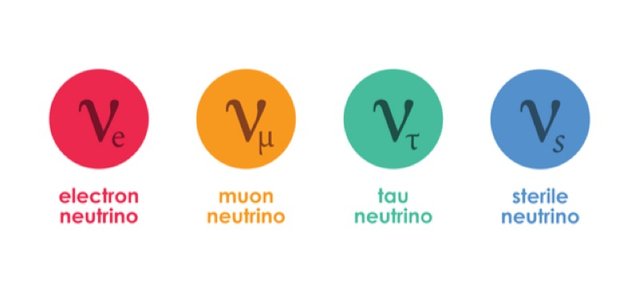
In 1998, experiments carried out at Super-Kamiokande Observatory in Japan by Takaaki Kajita and Sudbury Neutrino Observatory in Canada by Arthur B. McDonald confirmed that Neutrinos from sun change flavor in their flight to the detectors on Earth. Some of the Electron Neutrinos from the Sun change to the other two flavors before reaching Earth. Because of this change in flavor, the detectors in the Homestake Experiment could not detect all of the Solar Neutrinos which provided a satisfactory solution to the Solar Neutrino Problem.
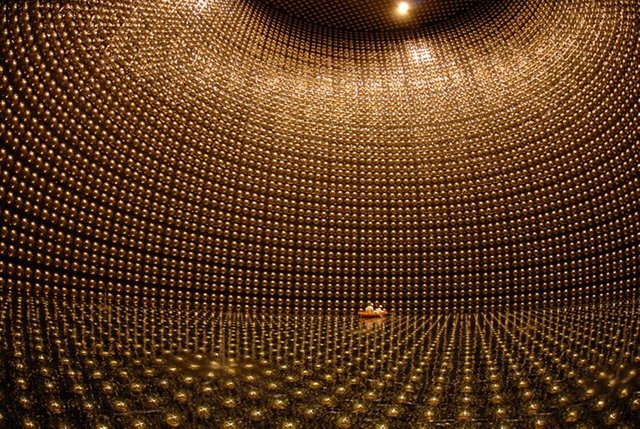
Raymond Davis, Jr. shared the 2002 Nobel Prize in Physics with Masatoshi Koshiba(who also detected Solar Neutrinos and neutrinos from supernovae in a similar kind of experiment as the Homestake Experiment, in Japan known as Kamiokande II Experiment) for their contribution in detecting the Solar Neutrinos. In 2015, Takaaki Kajita and Arthur B. McDonald were awarded the Nobel Prize in Physics for their landmark finding that neutrinos change flavor.
Further Research
After these developments, the interest in Neutrino research has grown multifold. The exclusive features of this extraordinary particle have led to many small to mega experiments in order to know more about its behaviors.
The KATRIN Experiment in Germany with its largest Spectrometer in the world has started collecting data in 2018 to determine the mass of the electron neutrino.
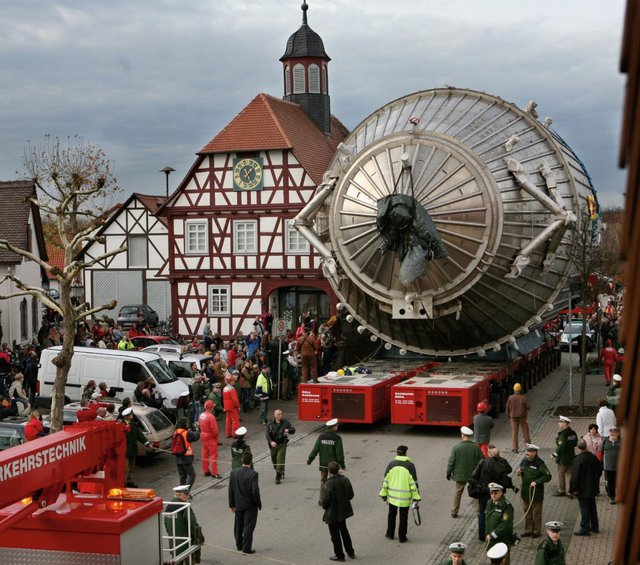
In 2013, the results obtained in the T2K Experiment(a collaboration of several countries) confirmed the Neutrino Oscillation Theory.
Though neutrino is a tiny mass particle, their numerous amount can exert a significant gravitational force on other matter. For this reason, the three neutrinos are the only known elementary particle candidates for Dark Matter.
When cosmic rays interact with the atomic nuclei in the Earth's atmosphere, along with some other particles Neutrinos are also generated. In 1965, the first-ever atmospheric neutrinos generated due to the interaction of cosmic rays with atmospheric nuclei were detected in an underground laboratory in the Kolar Gold Fields in India.
Neutrino is an important particle in astronomy. The Solar Core cannot be imaged in terms of ordinary electromagnetic rays(e.g. light) because most of these radiations cannot penetrate through the highly dense and ion rich surrounding. Because of the low mass and zero charge of neutrino they can easily penetrate through the outer layer of the sun and reach earth. These neutrinos can be used to image the core of the sun. For the same reasons, neutrinos are of important use in the observation of supernovae and galactic cores.
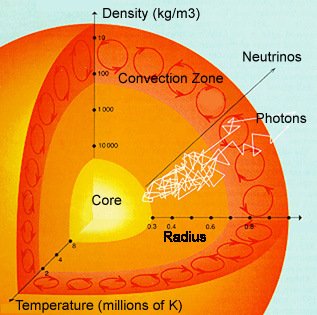
Neutrinos are the ideal candidate for probing the astrophysical sources beyond the solar system as they are the only known particle from outer space that does not get attenuated significantly while traveling through space.
In 2012, a group of American scientists transmitted a coherent neutrino message through a 780 feet thick rock marking the first-ever use of neutrinos for communication purpose. It may lead to neutrino communication in future where binary neutrino messages could be sent through denser materials such as the Earth's core.
The IceCube Neutrino Observatory in the South Pole uses a 1 km3e of iceblock with photomultiplier tubes throughout the volume for the detection of Cosmic Neutrinos.
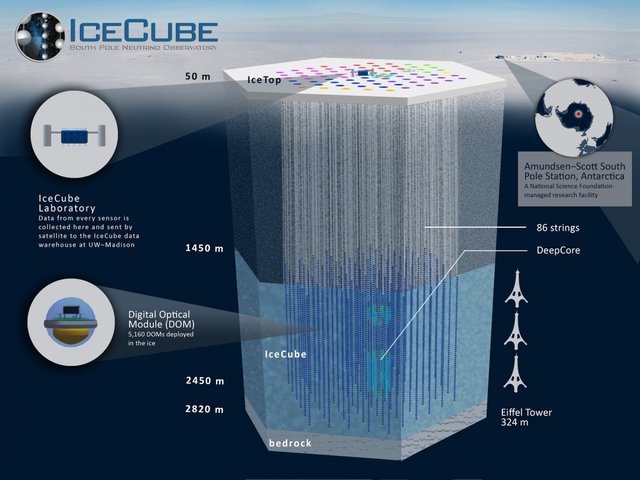
In 2018, the team announced that they have detected high-energy-neutrinos that hit their detectors, coming from the blazar TXS 0506 +056 located some 3.7 billion light-years away from Earth in the direction of the constellation Orion.
Readers can watch the video below titled "Neutrino Sun Particles - What Are Neutrinos (Documentary)" posted by the Youtube Channel The Universe and know more about Neutrino:
Neutrino is an exotic particle in the universe with many possible revelations in future. It is a messenger to earth from deep space which holds key to many mysteries of the universe. We need to look forward what time brings out of it.
References:
- Hyperphysics
- β-Decay Controversy. Neutrino Hypothesis
- Positron Decay
- Solving The Mystery of Missing Neutrinos
- Neutrinos
- Reason For Production Of Neutrino And Antinuetrino In Beta Decay
- Neutrino Sun Particles - What Are Neutrinos (Documentary))
- IceCube and Neutrinos
- Wikipedia

If you love dreaming and learning science then please follow me at
@physics-o-mania
Don't Forget to Read My Previous Articles:
- Japan's Space Elevator: The Future Of Space Exploration
- The Human Computer: Shakuntala Devi
- Quantum Computing: The Next Generation Computing Giants
- Nikola Tesla: The Man of Electricity
- Quantum Cryptography and China's Quantum Satellite : A New Era of Hack-Proof Communication
- Einstein: The Person Who Made People Love Physics
- Mohenjo-Daro: A 4000 Years Old but Modern City
- Mining The Lunar Surface: A New Race in Space?
- The ITER Project: Future of Endless Clean Energy?
- ISRO: The New Glamor in Space Race
- The Quest for the Grand Unification: The Theory of Everything
- The Strange Face of Reality: The Quantum Realm
Thank you for reading my content !!

Greetings, I know very little about this topic, I can barely understand it in its most basic connotation, but I will always apply this type of information that is more than information, it is knowledge of life we are in a global process of change and for me What you write is part of what is going on that is unstoppable.
I have written it in a very simple way. Hope you understand a bit of it.
Haha...an epic reply. Thank you so much.
Congratulations! Your post has been selected as a daily Steemit truffle! It is listed on rank 2 of all contributions awarded today. You can find the TOP DAILY TRUFFLE PICKS HERE.
I upvoted your contribution because to my mind your post is at least 24 SBD worth and should receive 230 votes. It's now up to the lovely Steemit community to make this come true.
I am
TrufflePig, an Artificial Intelligence Bot that helps minnows and content curators using Machine Learning. If you are curious how I select content, you can find an explanation here!Have a nice day and sincerely yours,

TrufflePig